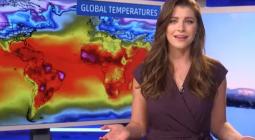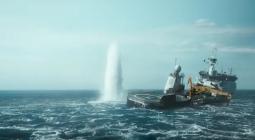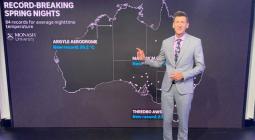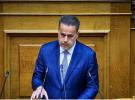‘You don’t want to waste time on climate change’: TV weather’s big problem with the environmental crisis
Lack of time, difficulties with scientific rigour, an uninterested public … television meteorologists open up about why they’re so quiet about the reasons for extreme conditions
Why do TV and radio forecasts rarely contextualise extreme weather events in terms of the climate crisis? After all, the latest data suggests Britain is getting hotter, wetter and stormier. The number of “very hot days” of 30C or more, according to the Met Office’s latest climate report, has trebled over the last few decades. Last year was the second warmest on record since 1884, with only 2022 warmer.
“If you believe, as I do, that climate change is the most fundamental challenge facing humanity,” says Sunil Amrith, history professor at Yale’s School of Environment, and author of the forthcoming book The Burning Earth: An Environmental History of the Past 500 Years, “any contribution to making its causes and effects more widely known will have a role to play”.
Extremely wet days occurred 20% more frequently in 2014-23 than from 1961-90. Disturbing too was data from the tide gauge at Newlyn in Cornwall showing the sea level was higher in 2023 than any year since 1916.
Met Office forecaster and presenter Alex Burkill does not agree that climate denialism is rife among meteorologists. “I think the reason we don’t do it very often is twofold. One is timings. We don’t always have a huge amount of time to talk, particularly on TV. If there’s important weather to be discussing, you don’t really want to waste time talking about climate change. You’d much rather get the information the public need to make sure they stay safe.”
Burkill says that for analyses of what causes extreme weather, you’d do better to consult the Met Office’s YouTube channel or its app. “That’s where we do our deep dives, our 10-day trends. In those deep dives we will, if necessary, put it down to climate change.”
Andrew Charlton-Perez, professor of meteorology at Reading University, several of whose students have gone on to be weather forecasters, says it’s hard to strike the right balance. “It’s a bit of a Trojan horse. If you possibly can, you squeeze in some meteorology to explain something, but actually what most people want to know is, is it going to be hot?”
The second reason Burkill cites is more surprising. It is hard, he says, to demonstrate with scientific rigour that looming extreme weather definitely is caused by the climate crisis. “We’ve always had high temperatures, we’ve always had low temperatures, we’ve always had heavy rain, we’ve always had strong winds,” he says. “Obviously, a changing climate is making extreme high temperatures and rain more common and they’re likely to be down to climate change, but it’s hard to show that.”
Charlton-Perez agrees. “You can’t in good scientific judgment say these events were due to climate change all the time. It requires quite a complicated chain of arguments and marshalling of data to make the case.”
This is precisely what the growing field of climate attribution studies does – using statistical analyses to attribute local extremes to the climate crisis. Amrith says such analyses were used by the Singaporean government investigation into the turbulence that hit flight SQ321 in May, resulting in the death of one passenger and more than 30 people injured. The official report attributed the turbulence to the climate emergency. But Burkill says it is a tricky business for forecasters to use such calculations on TV weather bulletins. “The normal process is to do a study post the event to assess whether climate change has played a role.”
One exception to this happened in July 2022, when the UK saw temperatures exceed 40C for the first time. An earlier Met Office study had concluded that the 40 threshold would probably be breached only because of the climate emergency.
“Temperatures of this value had never been experienced before and presented a risk to a public not used to these levels,” says Met Office spokesperson Grahame Madge. “The chances of exceeding temperatures of 40C in the UK would only be likely with climate change, so we were able to signal this in our forecasts ahead of the event.”
This was a discombobulating moment for British meteorology. “When I became a meteorologist 10 years ago,” says Burkill, “I didn’t think it would be as soon as 2022 when we were talking about temperatures getting to 40 Celsius in the UK. We thought it’d be the next 50 years or so.”
And then there was Storm Babet that laid waste to much of the east coast of Scotland last October. “While we were reporting it, we would mention the fact that the changing climate would have made that event more likely,” says Burkill. “You’ve always got to have a caveat – that this could have happened without climate change. It’s just more likely with it. So then whether or not it has its place in a very short bulletin is a vexed question.”
TV meteorology has clearly changed since the heady days when presenters appliquéd maps with what looked like velcro-backed snow and rain symbols made by preschoolers. The hope must be that supercomputer modelling used now to create our bulletins makes booboos like the one Michael Fish made on 15 October 1987 less likely. “Earlier on today, apparently, a woman rang the BBC and said she heard there was a hurricane on the way,” said Fish at the time. “ Well, if you’re watching, don’t worry, there isn’t!” Sadly for Fish, and indeed for Britain, there was.
Charlton-Perez defends the weather presenting legend. “But you know, Michael Fish was a meteorologist and forecasting the weather scientifically.” Since the 1980s, though, Charlton-Perez points out forecasting has become more sophisticated. “We have moved from interpreting charts according to physical laws to having a computer solve the equations and make the forecast. We now do it so the weather forecaster is not looking at a single forecast – they’re looking at maybe 50 or 100.”
But your nightly weather bulletin is poised to be revolutionised, like everything else in human culture, by artificial intelligence. Charlton-Perez points out that in the past two years Google, Microsoft, Nvidia and Huawei have been developing weather forecasts using AI technology. “They run thousands of times faster than normal weather forecasting models. I can run those on my laptop.”
If AI is more accurate and less labour intensive, the ramifications for forecasters and weather presenters are alarming to contemplate. “All of the major forecasting centres are grappling with that,” says Charlton-Perez. “People are nervous about their jobs. And then the question becomes: do you trust Google to do your weather forecast?”
Perhaps AI could not only more accurately forecast the weather but ChatGPT-engaged bots could present it, making, say, Carol Kirkwood and Stav Danaos redundant. “From a presenter point of view, there’s obviously the concern that we might get replaced with an AI robot,” says Burkill. “I don’t think that’s going to happen particularly soon, because I think people still want that human interaction.” He has a more pressing worry – that his weather forecasts can be deepfaked. “More concerning is the ability for people to use AI to modify what we’ve said. They can be quite convincing.”
In the meantime, the battle for meteorologists to get the message out about the climate crisis faces another obstacle: social media. “In the past, people might write in to complain, but now, within minutes, I could have someone popping off on my social media and disagreeing with me. We do get comments on our posts and forecasts and some are pretty horrible,” says Burkill. Often they come from deniers furious at suggestions that humans might have had a role in making the world hotter, wetter and stormier. “They feel strongly about their misinformation.”
And nothing, be it human weather forecaster or artificial intelligence, is going to change that.
Cover photo: By The Guardian






